The child has skin on the toes. Closes the skin of the hands and feet of a child. Reasons and treatment
Jan 12
Does the skin on the fingers of a child cling? We treat kids' fingers
The skin on the baby’s body, however, as in an adult, is a protective outer cover. And therefore, caring mothers rightly sound the alarm if they see the slightest violations of the skin, including when they find that the skin on the fingers of a child’s hands is covered. By the way, the protective function is the main, but not the only, if only because the skin is the largest organ of man. It implies not only protection against mechanical or physical impact. She is involved in a number of processes:
- Respiratory
- Exchange
- Thermostatic.
Finally, the skin is an organ of senses, with the help of which a person feels pain, and heat with cold, and touch, and pressure.
The device of the skin
If the baby's integrity of the skin is impaired, namely peeling is observed, then the damage affects the upper layer of the skin - the epithelium. In general, this body consists of:
- The epidermis, which includes the same epithelium and basement membrane;
- The dermis, which is the skin, is represented by elastic fibers, skin muscles, sweat and skin glands, capillary loops and nerve endings;
- Subcutaneous fat, among which nerve fibers and blood vessels are dispersed.
And while the skin is healthy, it is smooth, supple, elastic. It looks aesthetically pleasing, a person feels comfortable. On the contrary, fingers look very unsightly when peeling off. Those around do not always respond favorably to such pens, especially since the fingers are always in sight, because the defect is constantly striking. And the painful sensations that the child experiences also need to be taken into account.
Is your skin sick?
 If the parents did not change the detergents in the house for 3 months? Including soap, powder, conditioner, shampoo, bath foam, and suddenly the baby found changes in the skin, and this could be:
If the parents did not change the detergents in the house for 3 months? Including soap, powder, conditioner, shampoo, bath foam, and suddenly the baby found changes in the skin, and this could be:
- dry skin
- redness,
- excess sebaceous discharge,
- rashes,
that is, the likelihood of a malfunction of the internal organs. The actual disease of the skin is scabies, and even, perhaps, skin mites that have taken root in the body. Everything else is a signal of the body, its cry for help, so you need to check:
- Intestines,
- Liver
- Lymphatic system.
And the human body removes all fungal infections through the skin:
- Feet and palms
- Fingers and toes
- Inguinal folds and wrists
itchy, peeling and cracking.
In some patients, the skin is clouded, because they have eczema - a disease that is allergic in nature.
But most often, if the skin on the fingers of a child is covered, this is a sign of vitamin deficiency. Even if the baby eats enough vegetables and fruits, most likely they are not absorbed by the body. And here official medicine and doctors from the people are united: good rubbing is needed.
We treat kids' fingers
According to certified specialists and homegrown doctors, peeling of fingers indicates a deficiency in the body of vitamins A and E. The funds proposed below should be rubbed into the fingers 2-3 times a day, as well as at night.
- Radovit cream,
- D-Panthenol
- Diaderm
- Aevita capsules - pierce the capsule with a needle and lubricate.
- Ready oil solution of vitamin A.
What exactly to choose - everyone decides, proceeding, including from financial opportunities. And the effect of these drugs is about the same.
An article on the types of spots, peeling of the skin of a child.
Each parent carefully monitors the condition of their child. How does he breathe from the first days of his life, what is his temperature, what is happening with his skin, teeth, nose and other organs and systems.
Detection of any sign of disease or alteration on the skin, very worrying parents. This also applies to rashes, various spots and peeling of the skin. Why does skin clothe what to do? It is necessary to identify the causes and methods of treatment of peeling.
Why does the skin of a newborn peel between the fingers - what should I do?
The skin of a newborn between the fingers can peel off for several reasons:
- From the very moment of his birth, a newborn is trying adapt to the new environment. Now there is no amniotic fluid around it. Around oxygen, land space and all the unknown.
His skin is not so hydrated and from this it can experience a kind of “stress”.
In response to dryness, cracks, rough spots, seals, including between the fingers, may appear on the skin of a newborn.You can eliminate this trouble with a nutritious baby cream - When a little man gets used to new conditions, he may develop different reactions to what he eats and uses.Parents try to lay the whole world at the feet of their crumbs. That's exactly what he can suffer from. Often because of this, on the heels, feet, between the fingers of newborns, scaly skin forms
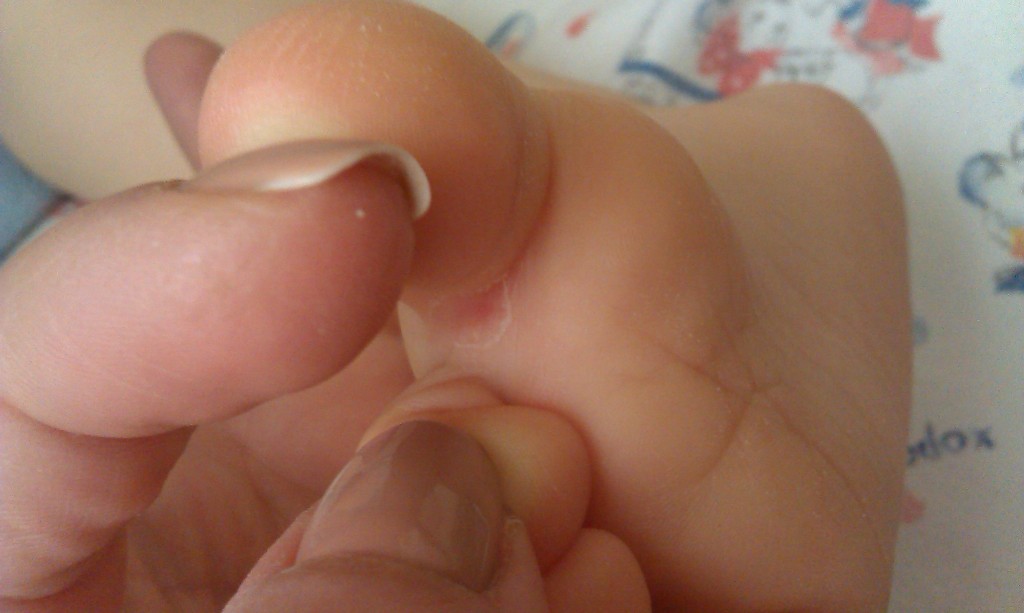
- Lack of certain nutrients. Perhaps the baby's body lacks vitamins. From this, wrinkled folds and peeling appear between the fingers. These are usually vitamins A and E
Try to balance your diet for the intake of beneficial substances for the child, and consult a doctor for prescription of fortified preparations - Fungal infection. Unfortunately, even a young child can have a fungal infection. To eliminate it in a short time, consult a specialist. He will help to choose specialized drugs that, without harm for the baby, will help eliminate the ailment.
- Streptococcal infection - It can manifest itself not only internally, but also externally. Often its manifestation is expressed in nodular redness, purulent formations. But the flaky sections between the fingers can also serve as a manifestation of the disease. Only a doctor is able to prescribe the right course to eliminate such a common and insidious disease
- The manifestation of an allergic reaction - One of the common symptoms, it is just peeling of the skin between the fingers of a child. The skin of the baby, like a litmus test. It reacts to irritants and reflects on itself everything that does not fit the body. This applies to food, surrounding items such as plants, baby cosmetics, household chemicals for washing children's things and other things. It is possible to cure a child’s skin by eliminating the “provocateur” and using special anti-allergic drugs
- The result of taking antibiotics - often immediately after birth, babies can go to the hospital. Symptoms of diseases can be very different. To eliminate some diseases, doctors prescribe a course of antibiotic treatment. Not always the right drug and the dose can cure the baby without consequences. One of the most harmless results can be peeling of the skin between the fingers of a baby
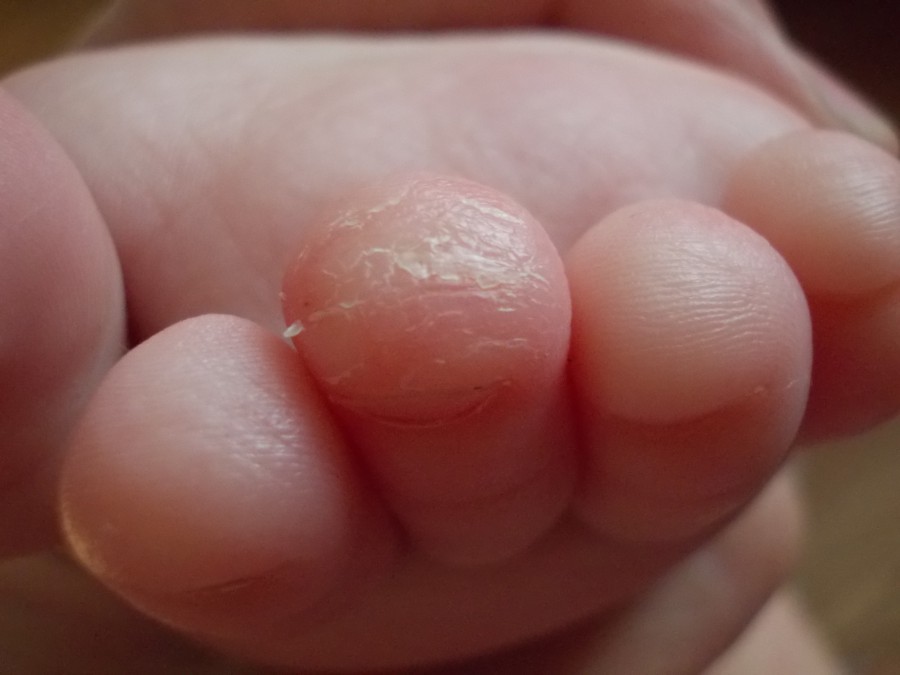
These are one of the most popular “founders” of skin peeling. Also, thanks to this symptom, diseases with a hidden course can be detected, the exact diagnosis of which can only be made by a doctor.
Rough spots on the body of a child. What are the signs and symptoms of a disease when the skin is covered?
Rough skin is not always a dangerous sign of disease, but you should not forget that it can give such a “bell” in case of a serious illness. Rough spots on the body of a child can occur in the following situations:
- Roughness on the skin of the face and small reddish pimples in a newborn can be a phenomenon of acne. These are hormonal rashes that independently go away by a month and a half. You do not need to do anything with the child. You will see that there is no trace of such roughness
- Dry air and low fluid intake can cause skin peeling
- Vitamin deficiency affects skin roughness
- Hard water when bathing can make tender baby skin dry and rough
- In open areas of the body, a child may experience roughness from wind and frost
- Shampoo abuse can make your scalp rough
- Such a harmless powder can dry the baby’s skin
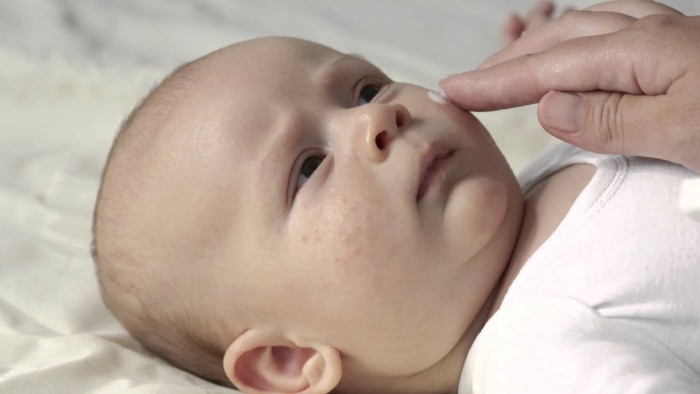
The manifestation of roughness can occur with the development of the following diseases:
- Congenital diabetes - in addition to skin dryness and roughness, an increase in appetite, unquenchable thirst and an increased glucose level are accompanied
- Congenital hypothyroidism - partial or complete loss of gland functionality. Due to hormonal disruption, excessive dryness is observed in the knee joints and elbows
- Ichthyosis - hereditary pathology can also be expressed in dryness and, as a result, roughness of the skin. Such a disease manifests itself at the age of 2 years. The skin of the baby is covered with white scales, and then they begin to fall away. But here there is a difficulty associated with rejection of the dry layer. And the baby’s skin becomes like fish scales
- Hyperkeratosis - increased thickening of the upper skin layer. As a result, keratinized parts are difficult to reject
- Helminth infection also accompanied by increased dryness and roughness of the integument
- Atopic dermatitis - the reaction of the child's body to an allergen. Rough skin itches and it literally burns under the rough skin

Treatment with drugs and medicines
Before starting treatment of a child for roughness and peeling on the skin, consult your doctor. He will determine the diagnosis and help you choose medications.
In no case should there be hormonal drugs on this list. Do not start the course with such components. They can provoke a violation in the child of internal organs and systems.
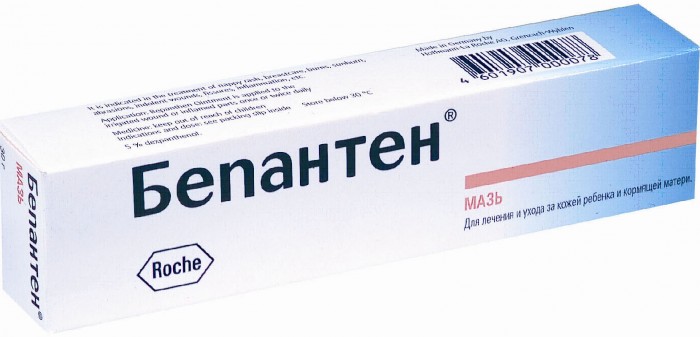

- The La Cree range is suitable for use in infants. The product does not contain hormones. Only a natural base. Suitable for sensitive baby skin. Eliminates dryness, irritation, assists in the treatment of allergies, dermatitis. An emulsion and cream are on sale. Daily single use for several days will eliminate not only peeling, but also redness
- Cream Elidel. The drug is for the local treatment of inflammatory areas of the skin. Eliminates itching and peeling. Allowed use for children from 3 months. It is prescribed by doctors in case of manifestation of atopic dermatitis, eczema. The drug is also good in that it can be applied to delicate skin areas (neck, head area). The cream is not allowed to apply in case of fungal, viral, bacterial skin lesions
- The usual peeling with weathering or skin irritation can be lubricated with a baby cream. Thanks to the greasy base, it saturates dry areas and eliminates the trouble

Treatment with folk remedies
Treatment should begin immediately, immediately after the parents suspected that something was wrong in the child's body. Then not only the roughness of the skin, but also the internal development of the disease will be eliminated.
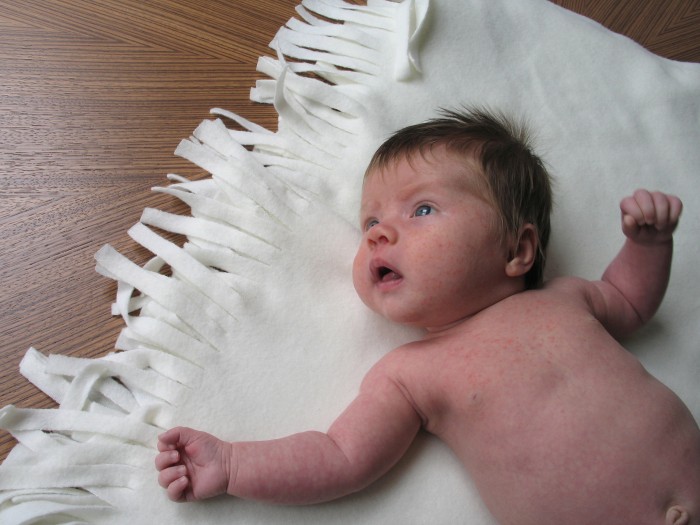
Roughness and peeling in children can occur at different ages. Long before advanced pharmacy products appeared, our ancestors dealt with such ailments with the help of natural remedies.
Here are some recipes that will help get rid of peeling on the feet and fingers, as well as save your hands from cracking the skin:
- Rubbing with peach oil can moisturize the skin after wind, frost, and the manifestation of certain diseases. It is enough to wipe the damaged areas of the baby’s skin a couple of times a day
- The use of vitamins A and E will restore the delicate skin of children
If the roughness covers the child’s legs, the child’s skin will peel off and peel off.
RECIPE: For half an hour, apply freshly boiled mashed potatoes of 3 potatoes mixed with yogurt (0.5 cups) and 5 tablespoons of olive oil.
Wrap the baby's feet in a potato mass; after a while, rinse under running water without soap.
The procedure is performed at night, then cotton socks are put on.
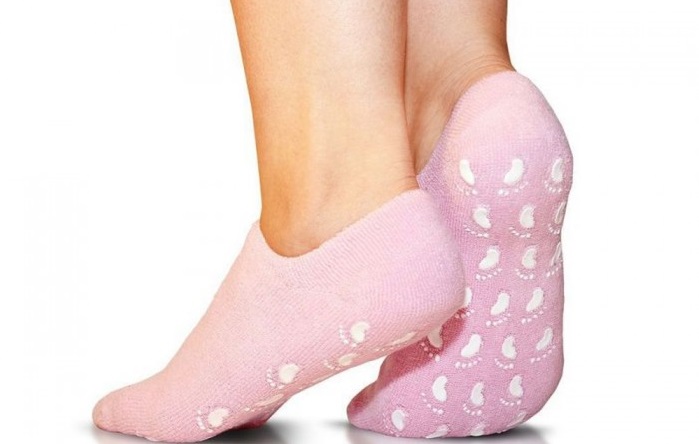
RECIPE: Mix 100 ml of sea buckthorn oil and 6 teaspoons of pumpkin puree until smooth. Then smear the affected areas several times a day.
RECIPE: Skin to get rid of peeling with fatty kefir (0.5 cups) and 1 grated carrot. All “affected” areas of the body can be treated with kefir-carrot mixture
RECIPE: For 40 minutes, apply the mixture. It consists of two yolks of chicken eggs and half a glass of olive oil.
It is applied to the skin of the legs, wrapped in cellophane. After that it is washed off under running water.
The presented recipes have a lot of positive reviews from those parents whose children had skin problems. With the help of recipes, you can restore the former tenderness and beauty of the skin of the child. Closely monitor the nature of the formations and in case of questions, consult a doctor. Let your kids never get sick!
Quite often, attentive and caring parents find that the child has skin on his fingers. The reasons leading to this condition are quite a few. It is best to immediately show the baby to a qualified dermatologist. Only he will be able to correctly assess the condition of the small patient, find the reason that the skin on the fingers and toes of the child is clouded, and prescribe an effective treatment. In medicine, the condition when the skin on the arms and legs is covered is called desquamation.
Why does the child have skin on the fingers?
There are many reasons why a child has skin on his legs and arms. Consider all the factors that can lead to this condition:
- pathology of the pancreas;
- helminthic infestations;
- neurological disorders and stressful situations;
- frostbite of the fingertips;
- irradiation of the child's body;
- long-term treatment with hormonal, sulfanilamide, antibacterial drugs;
- viral diseases;
- staphylococcal or streptococcal infection;
- fungal skin lesions and other dermatoses;
- allergic skin reaction to internal or external allergens;
- vitamin deficiency, in particular an insufficient amount of vitamins A and E, necessary for the elasticity and integrity of the external epithelium.
As can be seen from the above, the skin of the child’s hands is covered for a variety of reasons, and each case of such a disease needs timely diagnosis and properly prescribed treatment, since desquamation is not an independent ailment, but a consequence of other diseases or pathologies.
How does desquamation develop?
In a child, the skin of the hands and feet is clinging gradually. Usually the first sign of this disease is itching. At first, it is not strong, the skin itches periodically, and signs of peeling of the skin are still not visible. Then the itching intensifies, the child increasingly combs the skin on the fingers and toes, from which it becomes inflamed and hyperemic. At this time, small bubbles with no visible contents appear in the interdigital areas and on the fingertips. Then these blisters increase in size, capturing more and more healthy skin. The rupture of the blisters occurs due to the fact that the baby itches all the time, as the itching intensifies. After that, the child has skin on the fingers and toes. In place of the peeling skin, a new and thin, pink color appears.
There are cases when peeling of the skin of the hands is not accompanied by severe itching and therefore parents do not immediately pay attention to the fact that there are functional disorders in the children's body. And when they finally notice, the skin is no longer on the fingers and toes, but on the palms, ankles and above. In this case, the process of treatment and recovery will be delayed.
In most cases, desquamation appears in the spring and winter, when a deficiency of vitamins begins in the child's body. Sometimes peeling of the skin of fingers and toes passes on its own without leaving any marks on the skin.
Treatment of a condition when the child has skin on his hands
When the child has skin on his feet, the first thing to do is treat the disease that triggered the appearance of desquamation. If peeling of the skin is caused by other factors (vitamin deficiency, frostbite, radiation), then it is necessary to help the skin recover as quickly as possible. To do this, first of all, you need to adjust the diet. It is necessary to introduce as many foods rich in vitamins A and E as possible into the baby’s daily menu. These vitamins are found in cereals (barley, rye, corn, oats), potatoes, fish oil, liver, eggs, peaches, apricots, plums, dried apricots, prunes , carrots, pumpkin, cabbage, dill, parsley and cilantro.
When preparing a child dishes from foods rich in vitamins A and E, do not forget that these vitamins are fat-soluble and are fully absorbed by the body only in the presence of vegetable or animal fats. Therefore, it is recommended to add a little sour cream or oil to the food.
In most cases, when the child has skin on his legs and arms, eliminating the imbalance of nutrients in a growing body is the main treatment for this disease. IN winter period, when it is problematic to include vegetables and fruits rich in essential vitamins in the child’s daily diet, it is worth consulting a pediatrician about the advisability of taking children's multivitamin complexes.
In addition to treating peeling of the skin of the hands and feet by taking vitamins A and E, due attention must be paid to hygiene procedures so that there is no infection of the comb sites. It is recommended to bathe the baby daily, gently brushing off the dried crusts on the skin. Of the folk remedies for the treatment of cases when the child is covered with skin, you can use the baths for arms and legs with decoctions of celandine, string, oak bark, chamomile. Moreover, after water procedures, damaged areas of the skin should never be wiped off, only “lightly soak” with a soft towel. Then you need to lubricate the damaged areas of the skin with a baby moisturizer. It is better if the cream contains vitamins A and E. In pharmacies, children's multivitamin creams are sold that contain not only vitamins, but also moisturizing oils, for example, Bubchen, Boro-plus, Bepanten, Radevit. You can buy in the pharmacy oil solutions of vitamins A and E, mix them and treat them with peeling places.
Skin in children is softer than in adults. It is easier to damage, rashes more often occur on it. But sometimes children's fingers and palms begin to peel off and “peel off” for no apparent reason. Why?
What you need to pay attention to
If your child’s hands begin to “peel” skin - evaluate are there any other symptoms . For instance:
- Inflammation;
- Redness;
- Itching
- Peeling in other areas of the skin;
- Discharge;
- Abrasions or scratches;
- Temperature increase;
- Deterioration of well-being.
You need to try to find out if there was contact with aggressive substances, burns, or if the child ate something allergenic.
If there is inflammation, the skin itches, there are peeling spots on other parts of the body, the child does not feel well - do not delay a visit to the doctor. This can be a symptom of a variety of diseases that require special treatment. For example, or eczema.
If there are no other phenomena, it’s probably - a completely harmless state, which is often found in childhood and adolescence.
Description of exfoliative keratolysis
Doctors cannot establish the exact causes of this disease. First of all, because it does not cause a person any inconvenience and passes on its own. Some believe that exfoliative keratolysis is a manifestation of mild dyshidrosis (an allergic reaction that is expressed in drying out of the skin).
This condition occurs mainly in spring and summer. White spots or bubbles of exfoliated upper layer of skin appear on the palms and fingers. They are filled with air (there is no discharge in them). The surface of the spots erupts and rounded zones are formed, limited by the edges of the exfoliated epithelium.
As a rule, these sites do not itch. They may be drier than the surrounding skin. Dryness is enhanced by contact with water, soap. In rare cases, skin cracks can form at the site of peeling, secondary inflammation develops.
What to do
After a couple of weeks, the integrity of the skin is independently restored. You can use moisturizers, ointments that accelerate healing, for example, and others.
If you notice the appearance of new symptoms or if the skin condition of the child does not improve within a week - see a doctor .




